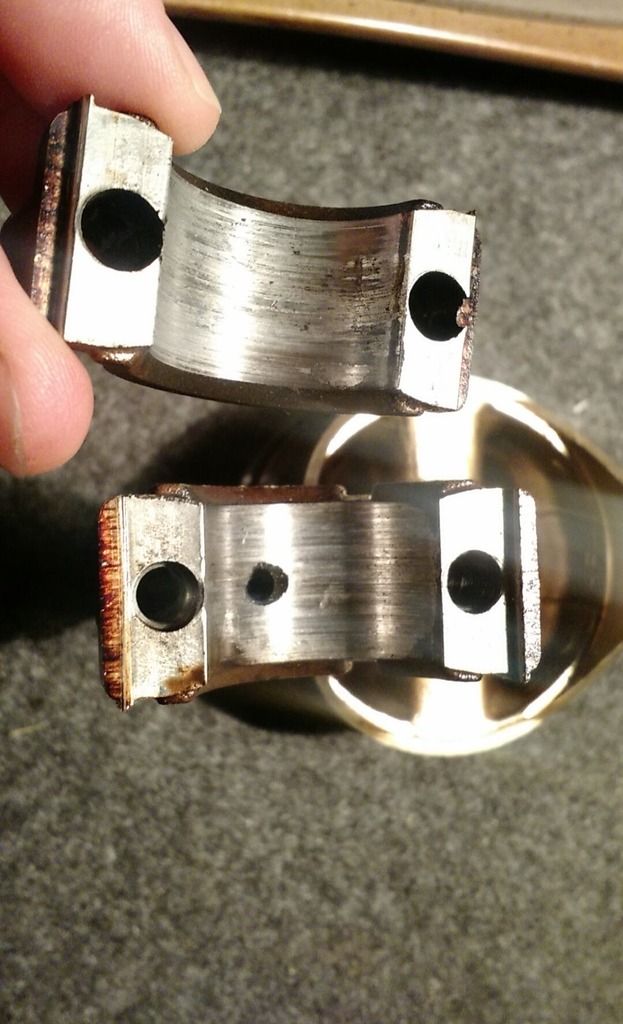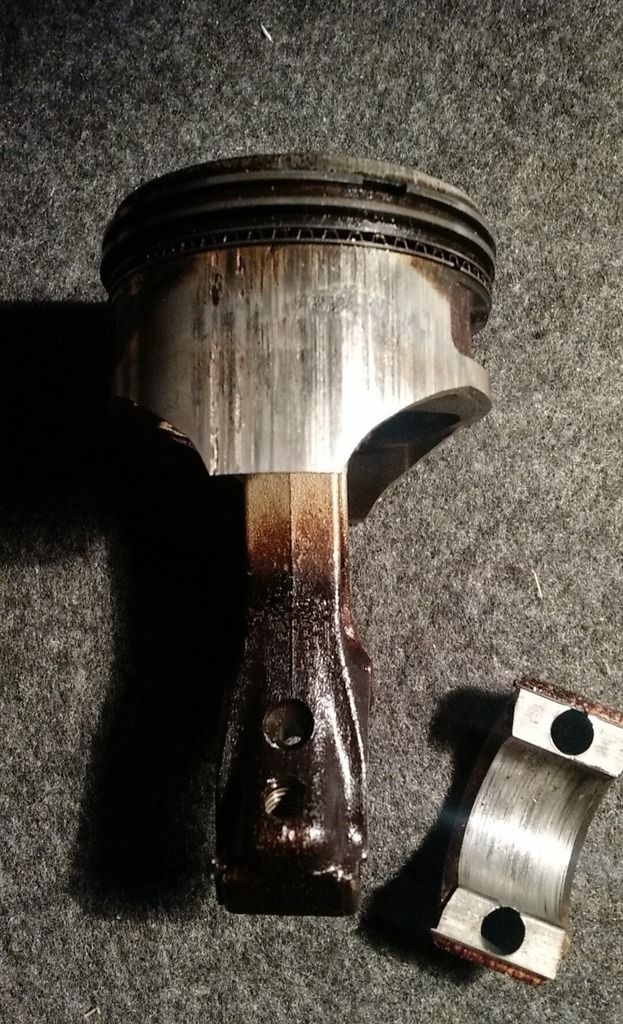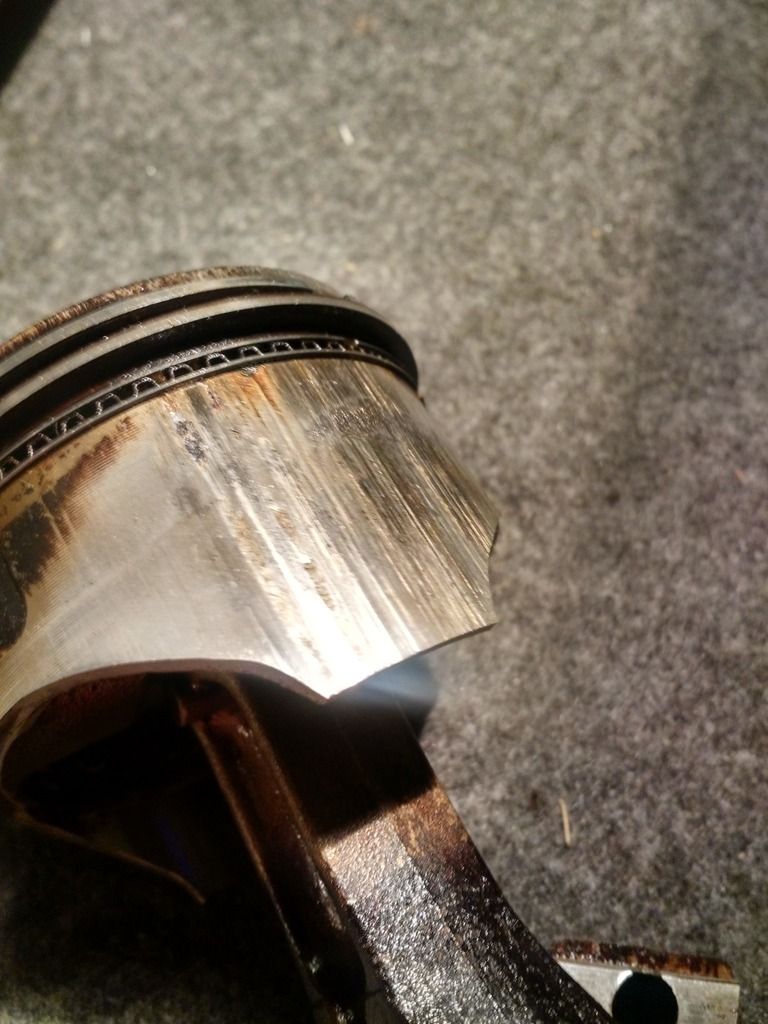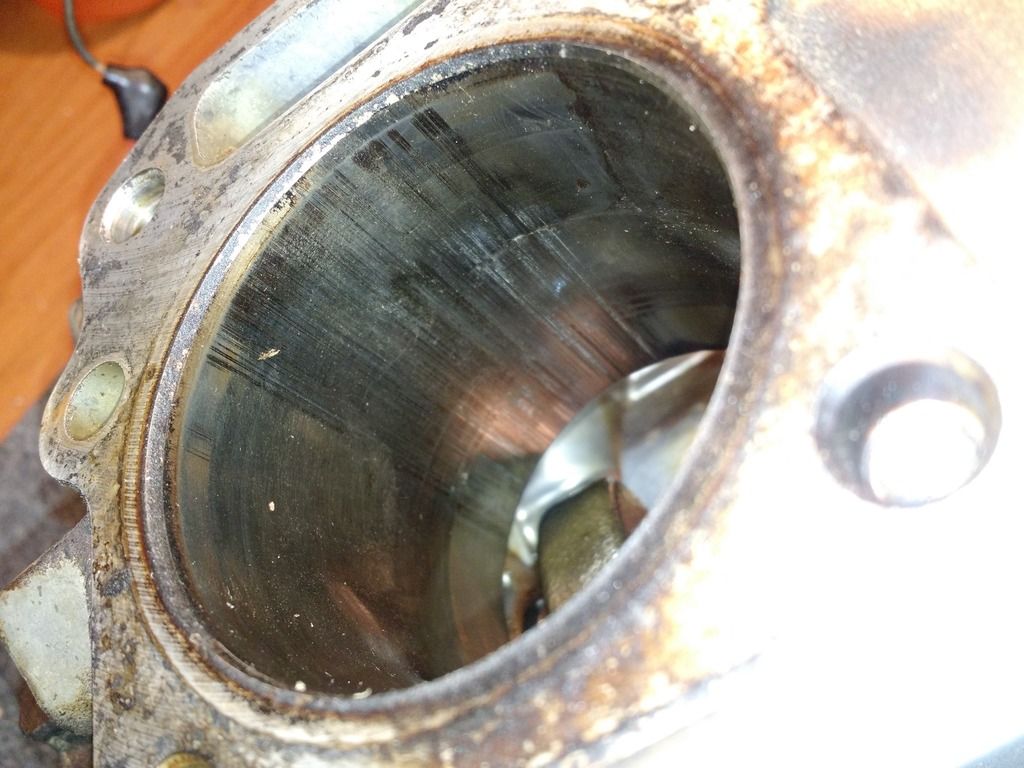KC_kid
Member
- Joined
- Apr 17, 2014
- Threads
- 2
- Messages
- 29
I had a problem last fall where something seemed to break inside the engine - loud banging internal to the engine. I shut it down before any catastrophic failure happened and the engine did not seize. I decided to open it up and have a look to see if I could fix it.
I pulled the engine and removed the oil pan and found that the bolts holding the connecting rod assembly to the crankshaft where backed out so far the lower cap was almost completely off. You can see in the picture where the bolts are backed out.
My question is: do I continue tearing down the engine or just tighten the connecting rod bolts to spec and put it back together? Right now the only new parts are a oil pan gasket and maybe a lower oil seal, I haven't even removed the head. I could remove the head to see what's going on and then potentially replace the rings, they cost $20. But I've never deglazed or honed cylinder walls before.
Any suggestions? I have had a lot of overheating problems with this mower in the past. I think I fixed it by no longer running higher octane fuel. Also notice how dirty it is, very sludgy oil, I suspect from overheating. This oil is less than 1 season of mowing in kansas city area.

I pulled the engine and removed the oil pan and found that the bolts holding the connecting rod assembly to the crankshaft where backed out so far the lower cap was almost completely off. You can see in the picture where the bolts are backed out.
My question is: do I continue tearing down the engine or just tighten the connecting rod bolts to spec and put it back together? Right now the only new parts are a oil pan gasket and maybe a lower oil seal, I haven't even removed the head. I could remove the head to see what's going on and then potentially replace the rings, they cost $20. But I've never deglazed or honed cylinder walls before.
Any suggestions? I have had a lot of overheating problems with this mower in the past. I think I fixed it by no longer running higher octane fuel. Also notice how dirty it is, very sludgy oil, I suspect from overheating. This oil is less than 1 season of mowing in kansas city area.






